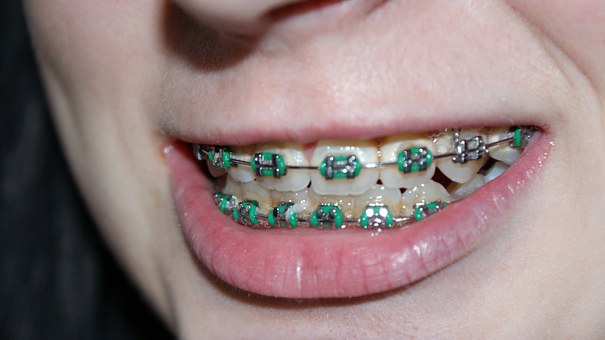Nowadays, it is more common to get braces in your adolescent years. For some children, it is a rite of passage in middle school uniting all “metal mouths” alike. As a child, getting braces is something new to show off among your friends or a way to express yourself. You have the option of celebrating holidays like Independence Day with patriotic red, white and blue ortho bands, or have the option of putting a cute kitty cat on a dental retainer. Unfortunately for most children, this sensation gets old fairly quickly. It doesn’t take many meals for you to realize that a good portion of the food that you eat remain stuck on those festive bands you worked so hard to customize. You start to notice that brushing becomes more difficult, removing food from brackets that you swear you ate two days ago. My point is, with braces comes great responsibility. Yes, chances are you are on your way to a straight smile in about a year or two but at what cost? What good is a straight smile when you end up with red gums, a foul breath, and cavities to boot?
Plaque retention by orthodontic appliances leads to gingivitis (infection in the gums) and an increased risk in cavities. Most orthodontic patients are in their teenage years, when the incidence of gingivitis is high. Most teenagers are more focused on their social life and social media rather than minimizing risk factors that can contribute to periodontal infection. Parents play a key role in hygiene compliance. So what can we do to maintain oral health?
A power toothbrush with soft filaments on a slow speed has been shown to be effective for maintaining gingival health. A manual toothbrush with soft end-rounded filaments is also recommended. A sulcular brushing method (brushing towards the gums) is needed to maintain gum health. Directing the brush filaments toward the biting surface and directing the brush the opposite way is necessary to clean all surfaces of the bracket and wire. Flossing using a floss threader is extremely important in accessing in between the teeth and maintaining the health of your gums.
White spots are demineralization of enamel caused by the plaque retention on orthodontic appliances which may be extremely difficult to control even when the patient’s oral hygiene is generally good. The best treatment for demineralization or white spots is fluoride treatments, such as fluoride toothpaste, mouth-rinse, and professionally applied fluoride varnish at frequent cleaning appointments. The application of a fluoride varnish can help to reduce demineralization by up to 50%.
Above all, a more frequent recall visit to the dentist and hygienist is key. In some cases, removal of the wire prior to cleanings will allow better access to the gums and teeth resulting in a better more comprehensive cleaning. Braces are a great tool for straightening teeth, but proper hygiene care and routine cleanings are necessary to maintain a healthy and beautiful smile.
We combine clinically excellent dentistry with comforting, relaxing care. You will experience dentistry in a whole new way when you make Scarsdale Dental Spa & Wellness your new dental home.
Dr. David M. Greene, DMD
As the founder and Executive Director of Scarsdale Dental Spa, Dr. David M. Greene, DMD oversees all clinical services. His high level of skill and understanding nature has allowed him to provide patients with the best in dental care for over 30 years.



